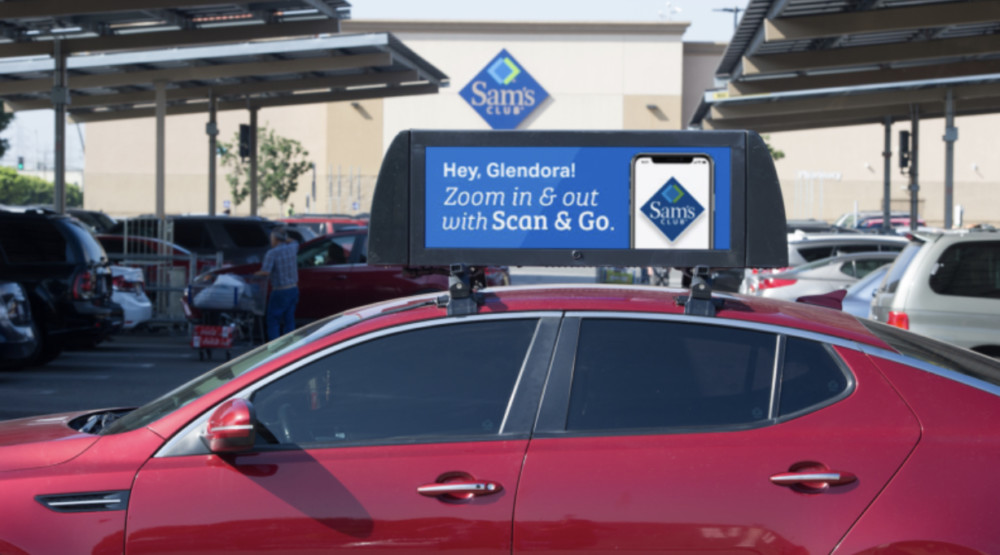By Carolyn Said
San Francisco Chronicle
WWR Article Summary (tl;dr) Startup “Firefly” enables professional drivers to make supplemental income by displaying ads while they drive.
San Francisco Chronicle
Uber driver Jackeline Arana was between passengers when she spotted a car with a video screen on top displaying ads and realized that putting one on her own car could be lucrative.
She turned off the Uber app and tailed the car for several blocks, eventually pulling over and running to speak to the driver. “I told him I really need extra money,” she said.
The driver gave her a card for Firefly, a San Francisco startup that places digital screens atop ride-hailed vehicles. Arana signed up as an early user, and she now makes an extra $400 a month.
A single mom of two, Arana said the money is really helpful for her older daughter’s college expenses. “I’m very happy for a way to get paid extra while driving,” she said.
Firefly, previously called Ozzy Media, has been working with several hundred drivers in a beta phase. It officially launched on Wednesday in San Francisco and Los Angeles, with New York coming next year.
Its pitch: Professional drivers (for ride-hailing services, delivery services such as DoorDash and Postmates, and taxi companies) can make supplemental income by displaying ads while they drive. The screens are “situationally aware” — they know where they are — so advertisers can target their outdoor messages by location and other criteria.
Firefly is among several startups seeking to use ride-hailing cars for mobile advertising. Other approaches are to wrap cars in giant vinyl decals, mount video screens in the back seat, and provide for-sale snacks and samples. The concepts may be a precursor to future robot taxi rides, which many experts think will be subsidized by advertising that could be in-vehicle or outside-vehicle displays.
“I have a lot of friends who drive for Uber and Lyft,” said Firefly CEO and co-founder Kaan Gunay. “Given that drivers’ margins have been compressing sharply and that they are all individual entrepreneurs, we saw an opportunity for them to monetize their cars in a better fashion.”
Firefly seeks people who drive professionally at least 30 hours a week and said pay averages $300 a week.
Gunay brushed aside questions about Uber and Lyft’s policies discouraging such advertising. Uber’s vehicle requirements state, “no commercial branding,” but the company does not have a process to track violators. Lyft’s online information for drivers says advertisements could make “passengers feel uncomfortable or pressured (and) may negatively affect your driver rating and likelihood of earning tips.”
California airports prohibit unapproved commercial activities on site. Firefly said it’s working to get airport approval but meanwhile will turn off the ads at airports.
Firefly installs the cartop screens for free at its South of Market garage and office. It takes two technicians about half an hour to mount the screens, first installing a Thule roof rack, then clamping on the screens and wiring them to the car battery, and installing extra fuses to protect the electrical system.
At 52 inches long by 17 inches high, the screens are a bit bigger than most rooftop cargo carriers. A new model, expected next year, is just 4.3 inches wide, and looks like a big smartphone. The company controls the devices’ design and manufactures them in Turkey and the United States. It would not say how much they cost.
Firefly, which has $21.5 million in funding, also claims social and civic aspects. It reserves 10 percent of advertising time for public service announcements, advocacy groups and community organizations. And it provides to cities anonymized data collected by its screens, including traffic conditions, air quality and temperature.
“It struck us as the perfect combination of how to benefit drivers and communities,” said Gunay, who co-founded the company with Onur Kardesler, the chief technology officer and a childhood friend in their native Turkey.
Firefly’s mobile billboards cycle through different ads every 8 seconds, unless advertisers request otherwise. The ads, mostly still images, are sent via a cellular connection. The company charges $4 to $15 per thousand impressions, using technology to calculate how many pedestrians and other drivers see each ad.
Outdoor advertising is generally a healthy segment because it’s not as cluttered as other media, although the ads risk being distracting and intrusive, said David Aaker, a marketing professor emeritus at UC Berkeley’s Haas School of Business, speaking in April about both rooftop ads and wrapped cars. Overall, however, the ads’ high visibility outweighs the negatives, he said — especially since they are among the few advertising areas not dominated by Facebook and Google.














































































































































































































































































































































































